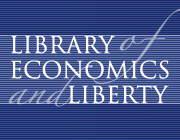
Present ValueAbout the Author |

20, or about $15. In other words, the present value of an amount far in the future is a small fraction of the amount.
The concept of present value is very useful. One interesting use is to determine what a lottery prize is really worth. The California state government, for example, advertises that one of its lottery prizes is $1 million. But that is not the value of the prize. Instead, the California government promises to pay $50,000 a year for twenty years. If the discount rate is 10 percent and the first payment is received immediately, then the present value of the lottery prize is only $468,246.
Some scientists say that millions of years from now the sun will burn out and the earth will die unless mankind discovers an alternative source of energy. Present value shows why this is not worth worrying about. Assume that 1 million years from now there are 10 billion people and that each person values his or her life at $100 trillion in 1992 dollars. (Economists typically find, by examining data on risk premiums for jobs, that Americans value their lives at no more than $3 million and that people in poorer countries place a lower value on their lives.) Then even with an unusually low interest rate of 2 percent, the present value of the loss from the sun burning out is less than 1¢.
David R. Henderson is the editor of this encyclopedia. He is a research fellow at Stanford University's Hoover Institution and an associate professor of economics at the Naval Postgraduate School in Monterey, California. He was formerly a senior economist with the President's Council of Economic Advisers.

